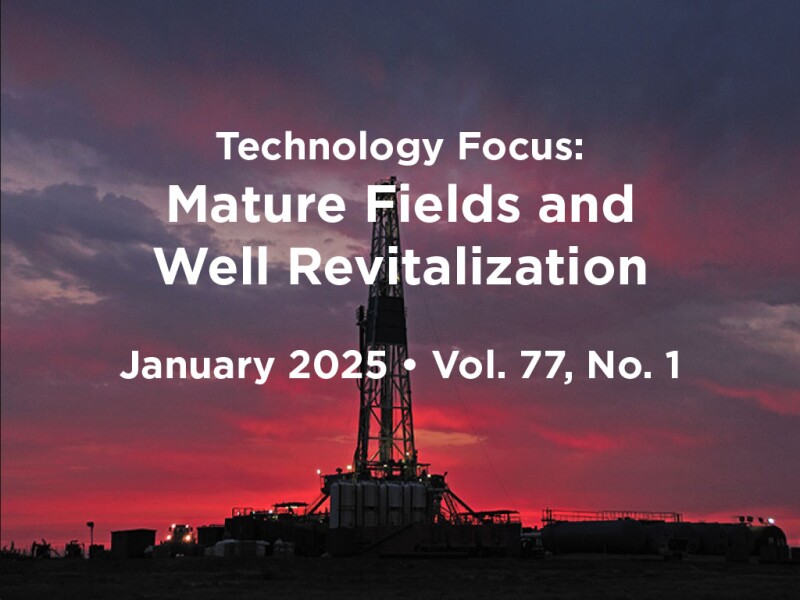What mature fields typically have in abundance are well, reservoir, and surface data. This data may be sporadic and of questionable quality but allows for valuable integration, corroboration, and multiple layers of quality checks before establishing any conclusions on revitalization performance metrics, targets for drilling, and estimates of reserves.
From the papers reviewed, a spectrum of case studies addresses how practitioners are taking on the challenge of extending economic life and revitalization of mature fields through better understanding of the subsurface and adapting existing techniques and technologies in innovative ways.
Targeted use of rate transient modeling has led to an elegant well-data-based understanding for ascertaining reasons for a lower-than-expected benchmarked recovery factor; mapping drainage areas and boundaries; and comparing well performances, allowing for low-cost and rigorous yet reasonably high-confidence outcomes. This can then be corroborated with any independent full-field, local, or well-modeling approach.
There is a niche of modeling-focused workflows that allows for larger reservoir- and field-level uncertainties to be entertained in mapping the remaining oil. Such practices have been around in the shape of map-based exercises for locating the remaining oil, but the introduction of time-saving and efficient algorithms that integrate reservoir physics with statistics now can provide confidence levels in the maps of unswept and undrained hydrocarbons.
At the larger scale of mature field opportunities, giant-fields revitalization projects provide an opportunity to start over to gain economically viable solutions. Given the specific challenges at hand, new technologies across well design, subsea, processing, and export infrastructure all are available to provide testimony to engineering innovation.
In all the cases selected to showcase mature field and well revitalization, the key is to allow diverse teams to pilot ideas before expanding them to large-scale applications. Success can come from nonlinear ideas, and that makes working with large and diverse data so rewarding and beneficial.
This Month’s Technical Papers
Rate Transient Analysis Transforms Exploitation of Mature and Tight Fields
Physics-Guided Data-Driven Workflow Identifies Bypassed Oil and Optimizes Infill
Revitalization Project Promises New Production Plateaus for Campos Basin Fields

A. Shahbaz Sikandar, SPE, is group subsurface manager for Jadestone Energy. He has more than 30 years of global subsurface experience, having worked in various countries in technical and management positions with SLB, Centrica Energy, Maersk Oil, and Qatar Energy. Sikandar has worked on maximizing economic value from existing assets and global growth projects spanning all phases of upstream activities, from exploration and appraisal to greenfield and brownfield developments. He holds bachelor’s and master’s degrees in petroleum engineering from The University of Texas at Austin.

